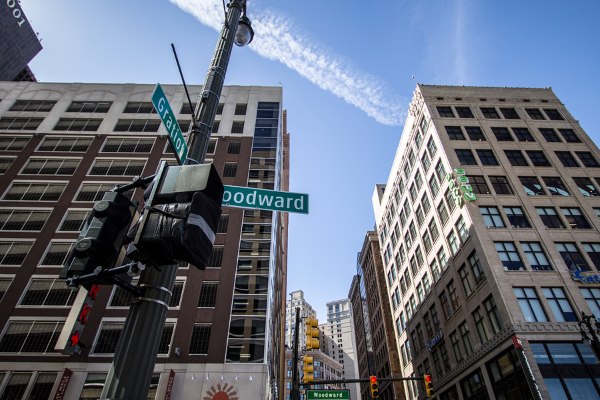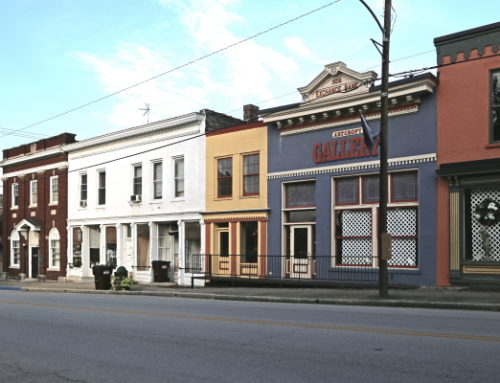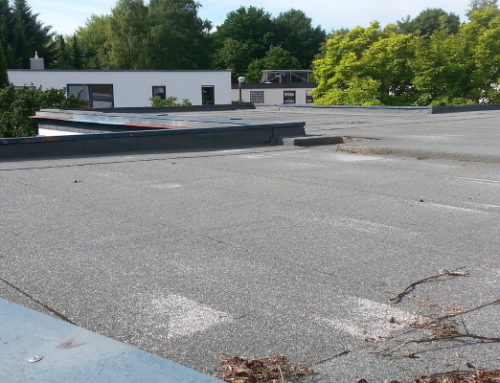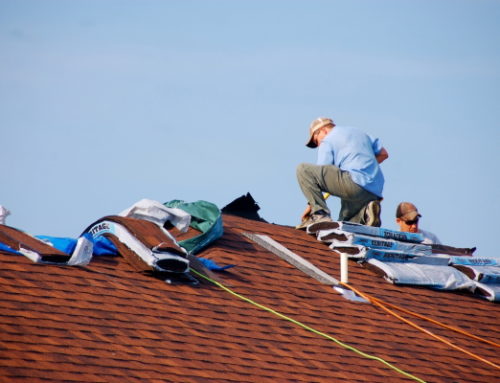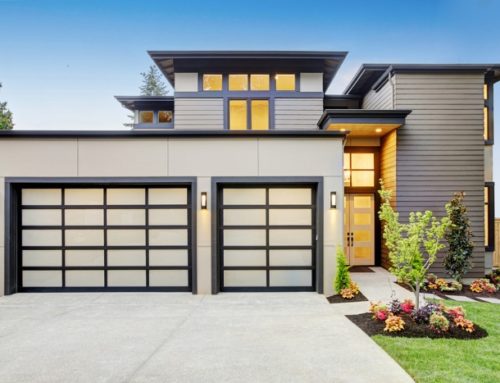If you’re deciding what roofing material to install for your facility, you’d probably ask yourself, “Why are flat roofs common on commercial buildings?”
Try to look around you. You’ll notice that malls, apartment buildings, colleges, and hotels have flat roofs. Maybe you’re guessing that cost-effectiveness is the reason. You’re correct, but it’s not the only one.
Read this blog post to learn more. The first part discusses the significance of flat roofing. Next, we’ll tackle 5 commercial roofing types. Lastly, we’ll talk about why working with roofing contractors in Clinton Township MI guarantees the best outcome for any flat roof service.
Why Are Flat Roofs Common on Commercial Buildings? 3 Reasons
Cost-Effective
First of all, building owners prefer flat roofs because they’re cheaper. Basically, roofing contractors use fewer materials for installation. The installation process itself also requires less time as contractors work on a smaller surface area.
Contractors on sloped roofs work on a complex design. Because of that, they charge more for their labor. Maintenance also costs less since roofers can easily walk on a flat surface versus a sloped one.
Extra Roof Space
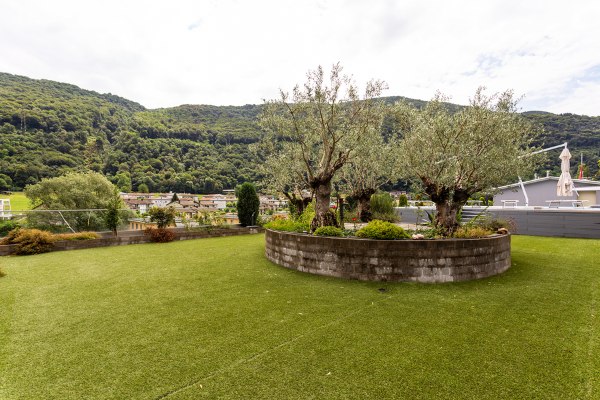
Flat roofing offers extra space for a rooftop garden. This adds beauty to your commercial building and can be a place for meetings.
Businesses use HVAC systems and would rather avoid keeping them on the ground. Placing these units where random people pass by makes them prone to vandalism and destruction.
Flat roofing systems offer additional space to accommodate HVAC. Extra spaces are also used for solar panels. Need a relaxing place to hold your meetings? How about a rooftop garden? Flat roofs make these possible.
Height Limits
It’s not practical for buildings to use sloped roofing systems. This is because of building code height limits in different locations. As a commercial building owner, it only makes sense to make the most out of square footage.
5 Types of Commercial Flat Roofing Systems
We’ve already answered the question why are flat roofs common on commercial buildings. Now, let’s explore common flat roofing materials. As a business owner or property owner, you should know the benefits of each type.
1. EPDM (ethylene propylene diene terpolymer)
A single-ply membrane, EPDM is a common flat roofing choice. It is known for its affordability. EPDM is also a durable material as it doesn’t easily acquire scratches. When it leaks, contractors find EPDM simple to repair.
In the past, black was the only available EPDM color. But today, you’ll see white EPDM. It comes in a variety of thicknesses. Typical options are 45 Mil, 60 Mil, and 90 Mil.
Regardless of the geometric configuration of your roof, you can still install EPDM. Got a complicated roofing project? No problem! Contractors have no difficulty with EPDM.
2. TPO (thermoplastic polyolefin)
This flat roofing material is the new kid on the block. Some people may doubt the effectiveness of TPO because it’s new. But because of recent advancements in the roofing industry, TPO improved.
If you plan to save on energy, TPO is an energy-efficient material. Thanks to its light-colored surface, it reflects sunlight. Whether you live in Michigan or elsewhere, you save on cooling costs with TPO.
When it comes to aesthetics, you’ll be pleased to know that TPO comes in various colors. No matter the look of your building, TPO has a color for you. Now that’s one superb flat roof.
3. Modified Bitumen (torch down roofing)
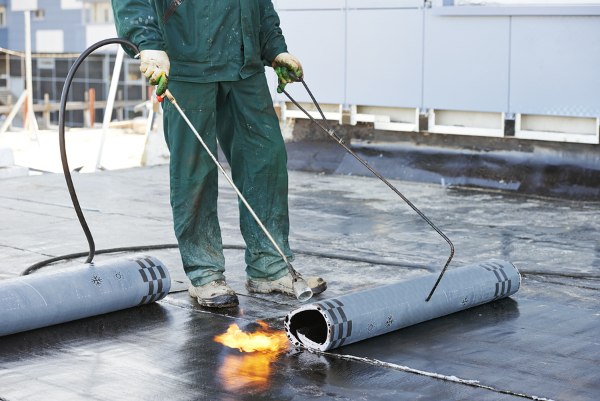
Modified bitumen or torch down roofing, is known for its flexibility.
Bitumen roofing is an ideal choice for commercial buildings because it lasts longer. It has a proven track record which is why smart investors trust it.
Modified bitumen is also called “torch-down” roofing because of the method in which it’s installed. The sheet is torched town onto a fiberglass base so that both layers adhere. This technique ensures that the roof stays durable.
Perhaps a notable feature of modified bitumen is its ability to expand and contract. Its flexibility makes it resistant to cracks – a common issue among flat commercial roofing systems.
4. PVC (polyvinyl chloride)
Now here’s a flat roofing type that has been around since the 1960s: PVC. Building owners who care about the planet choose PVC. You can call this roof a “green roofing” option because it doesn’t harm the environment.
PVC roofing reflects 65% of the sun’s heat and absorbs only 35% of it. In fact, some manufacturers have designed their PVC products that reflect up to 80% of heat.
Also, PVC lasts up to 30 years. The best part is that it doesn’t require a lot of maintenance. This low-maintenance roofing conserves the use of various materials. It reduces landfill waste.
And yes, this flat roofing is hard to ignite and resists strong winds.
5. SPF (spray polyurethane foam)
Roofers install SPF roofing by spraying a liquid that expands into a foam. The process is quick and error-free. You’ll be delighted with the fact that SPF roofs have no cracks and seams. When it rains, SPF roofs don’t leak.
Over time, water tends to pool over other flat roofing systems. This is not the case with SPF roofing. Other advantages of SPF roofing are the following:
- Energy-efficiency and comfort. It reflects sunlight and lowers indoor temperature.
- Application on existing roofing systems without problems. This is possible because SPF roofs are lightweight.
- Noise reduction benefits. With SPF roofing, employees work productively because they can focus better in a quieter environment.
Are Flat Roofs Really Flat?
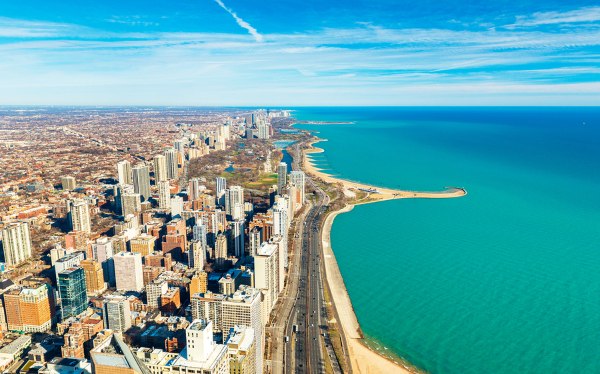
Flat roofs are not really flat. They have a slight roof pitch that allows water to drain.
The question, “Why are flat roofs common on commercial buildings?” leads many to think that flat roofs are totally flat. This is actually a misconception. Look at a flat roof and you’ll say that it appears horizontal.
But the truth is, it has a slight pitch. This slight pitch allows water to drain off. If it’s entirely flat, the roof would be prone to moisture problems! Some buildings with newly installed roofs experience leaks because of poor workmanship.
You need a good roofing contractor that can guarantee the correct pitch. If not, water pools when it rains.
Final Thoughts
We hope that this blog post helped you get a better understanding of flat roofing. As you can see, flat materials are the most useful and cost-effective choices for commercial properties. If it’s time to pick the best roof, re-read this post.
At Miller’s Home Improvement, we help facility owners with their roofing installation needs. We currently install EPDM, TPO, and Torch Down Roofing.
As a licensed contractor, we follow the best standards – regardless of what roofing work you want to be done. Take a look at our projects! Lastly, call us at 248-266-4657 to get a free estimate.


